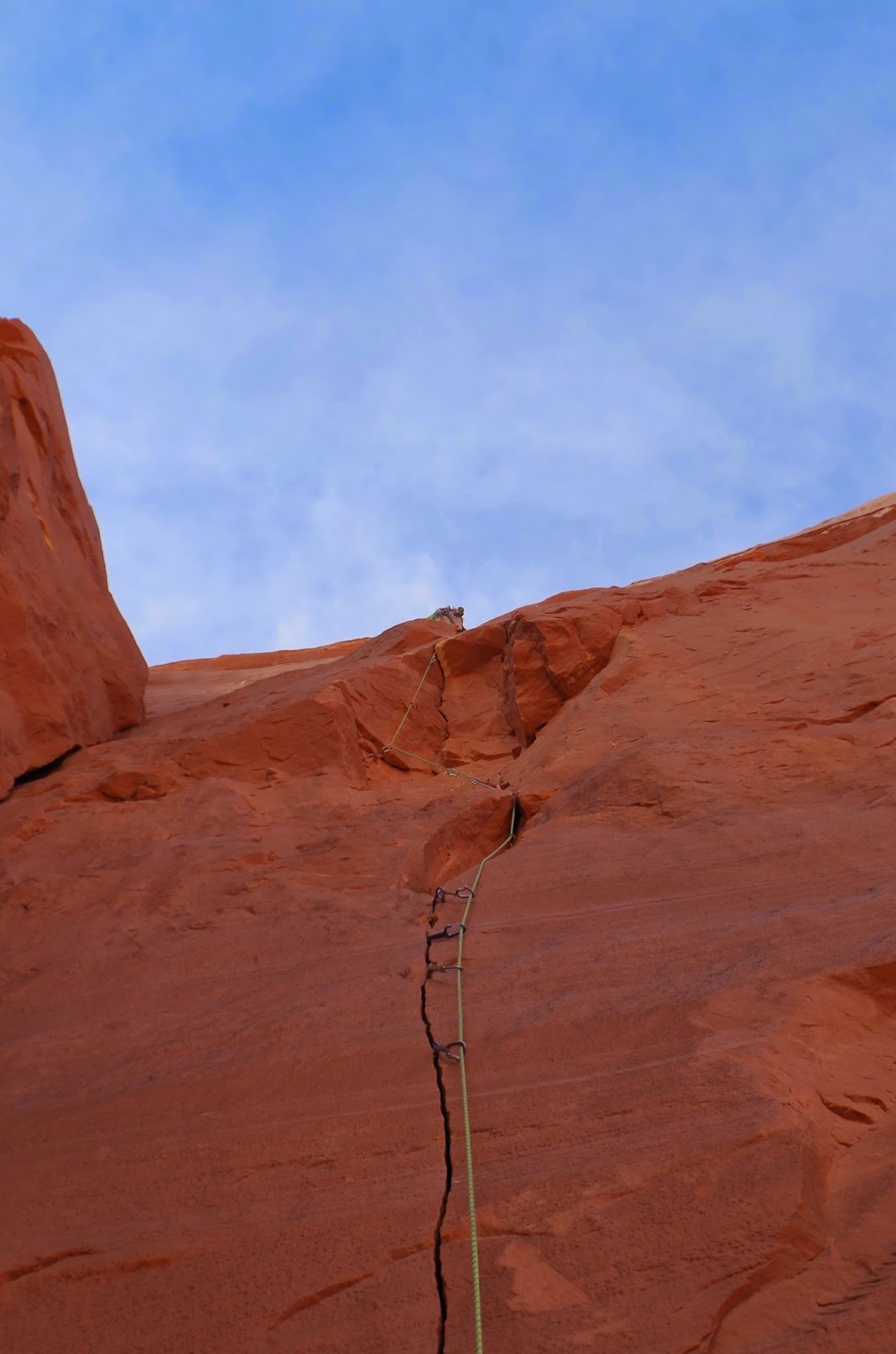According to outdoorsy types (i.e. Backcountry.com), there are three types of fun ranging from fun while it's happening and fun to remember (Type I) to miserable while it's happening and miserable to remember (Type III). Type II fun lies in the middle, miserable while it's happening but good to recall; Type II activities include getting lost, rained out, blown away, or generally beaten by the elements. Remembering Type II trips usually involves a pretty selective memory, but there are very real rewards like unexpected views or events that you'd never have seen if things had gone according to plan. Our visit to Tombstone Butte falls into the Type II category, things did not go according to plan and there was some suffering, but no regret and it's been really fun to recall.
 |
| The desert southeast of Moab. |
 |
| I do not like cows. I believe they signal impending doom. |
 |
| Tombstone Butte |
 |
| Pitch 2 - Rigor Mortis - Tombstone Butte |
The start of Pitch 3 was clear but difficult to execute as it required some stretching and there was a loose block at the top (and bless his heart, Brent doesn't want to kill me with a falling rock) [It's our party we can do what we want. It's our party we can say what we want]. The next 30 feet were a huge challenge though. I've mentioned before that aid climbing is slow (and repetitive, like Miley's lyrics). Instead of climbing up the wall like you would climb a ladder, using your hands and feet to move you up and leaving protection as you go just in case you fall (i.e., free climbing), aid climbing is more like building a ladder as you go. Gear is placed in the features of the rock and attached to 'aid ladders' (webbing sewn into steps), the climber moves up by pulling on and stepping up the ladders. In this way you can climb cracks that are too thin and small to climb using the strength of your hands and feet alone. Aid climbing can get you to lots of really cool, seemingly un-climbable places, but it requires lots of gear. Climbing without all the gear you want is decidedly not Type I fun.
 |
| Note the aid ladders and harness full of gear. |
 |
| Note how far away that bottom cam is, that's the #0.30. |
 |
| Moving up. |
 |
| The Cinch |
 |
| The view from the bottom of Pitch 3 |
 |
| Brent at the top of Tombstone Butte |
At this point in my complaining I must make a ridiculous confession: sandstone formations often look like genitals to me. The towers make sense, descriptions of those often include the word "phallic"; but the cracks or canyon walls that are shaped like ovals with pointed tops and/or bottoms look like lady parts to me. Thus, as I pushed my way up through this section I couldn't help but think that that must be what it looks like and feels like to be birthed as an adult. [It's our party we can love who we want. We can kiss who we want. We can sing what we want.] It felt just as silly and un-graceful as that admission sounds. Once I got through this final difficulty I could see and hear Brent again, yay! [To my home girls here with the big butt. Shaking it like we at a strip club.]
 |
| Pitch 3 |
 |
| The top |
 |
| Of course there was one last selfie before we rappelled to our potential deaths |
Upon returning home I looked at the Mountain Project description of the route and the first sentence stood out more clearly than on the first reading: "Some interesting situations." We were definitely faced with some interesting situations, even if the lyrics in my head were kind of inane. Good times.








No comments:
Post a Comment